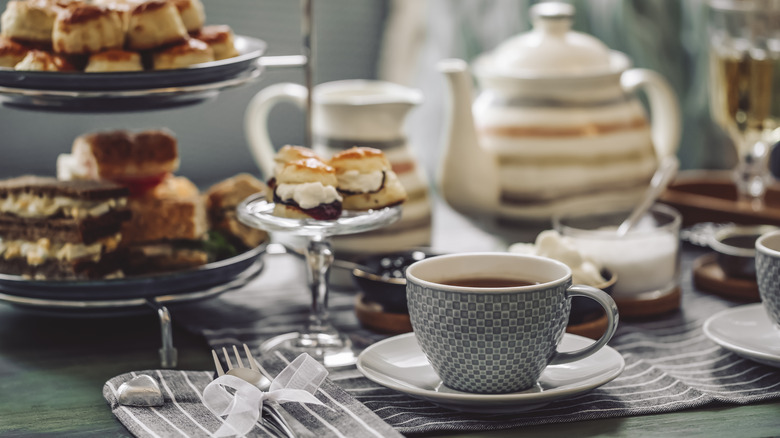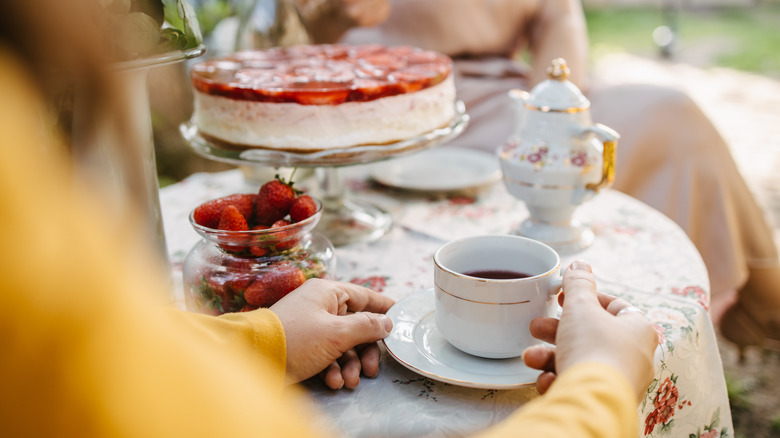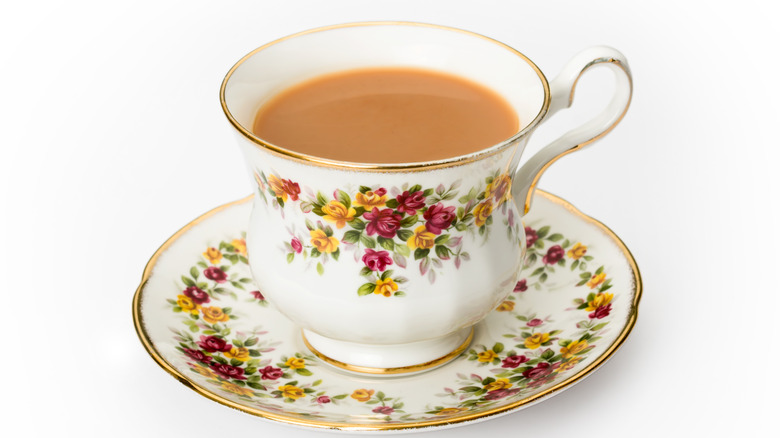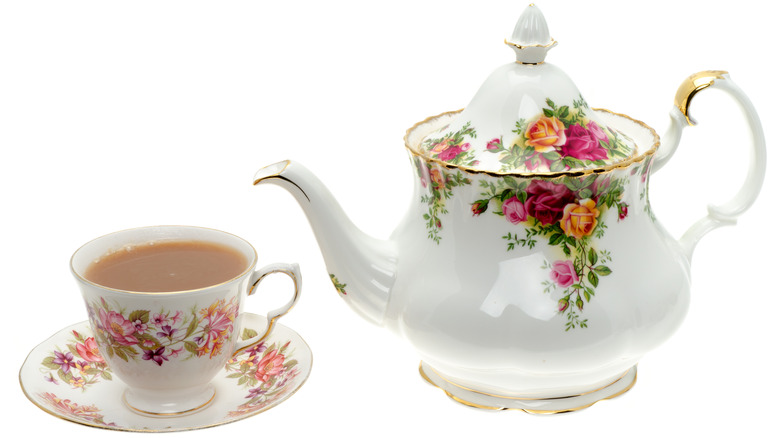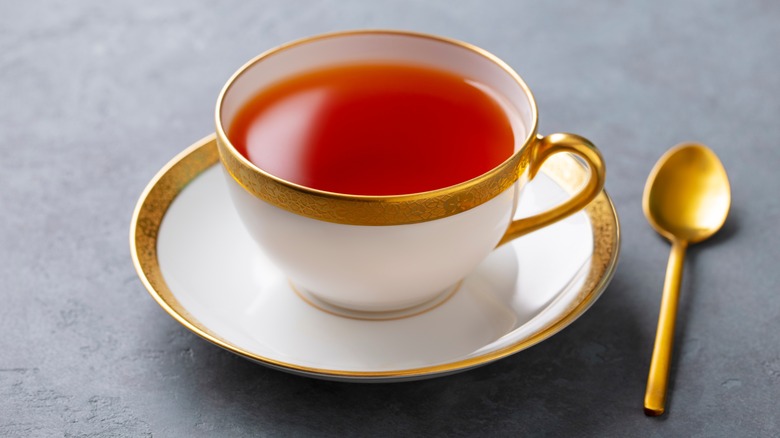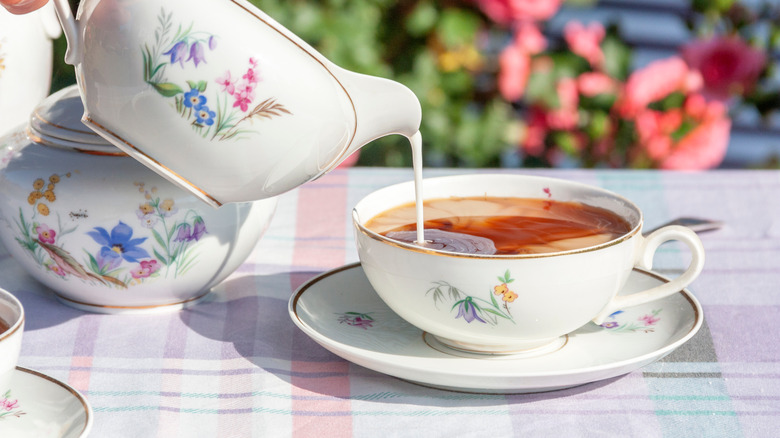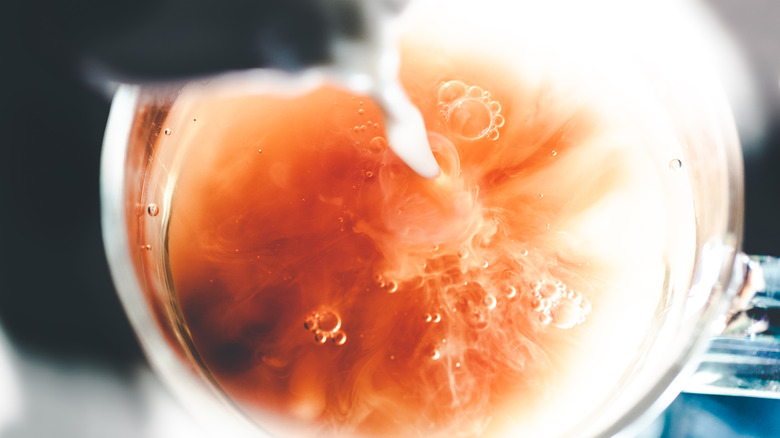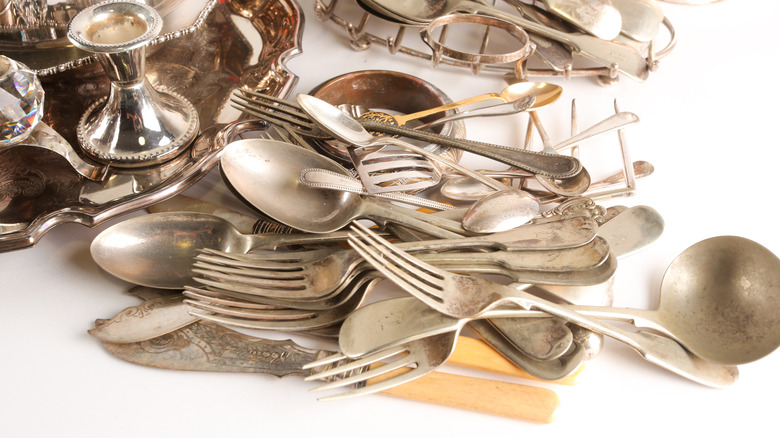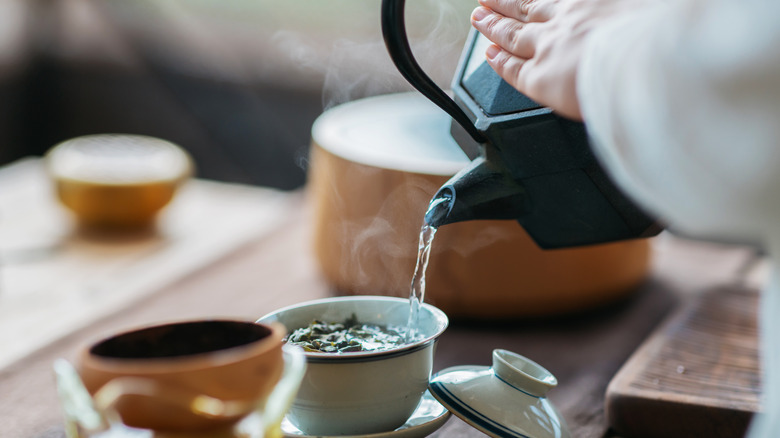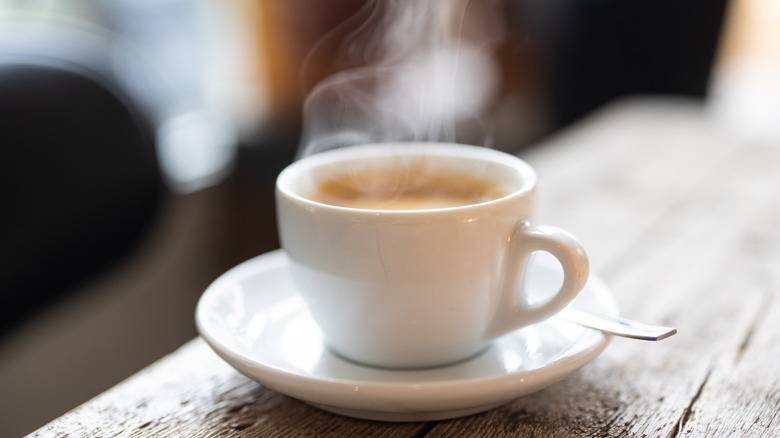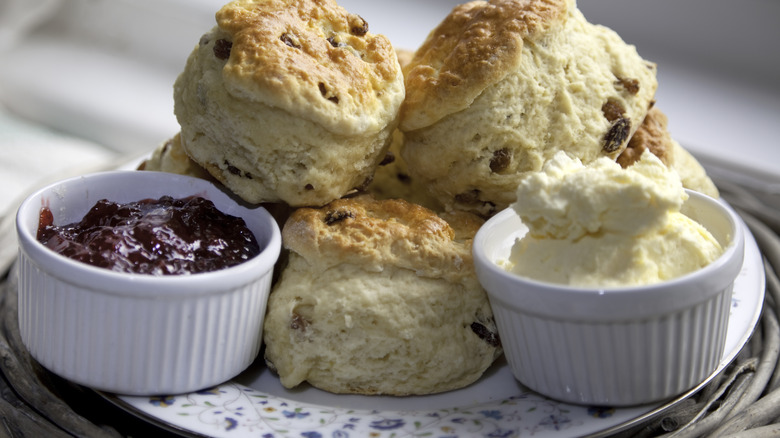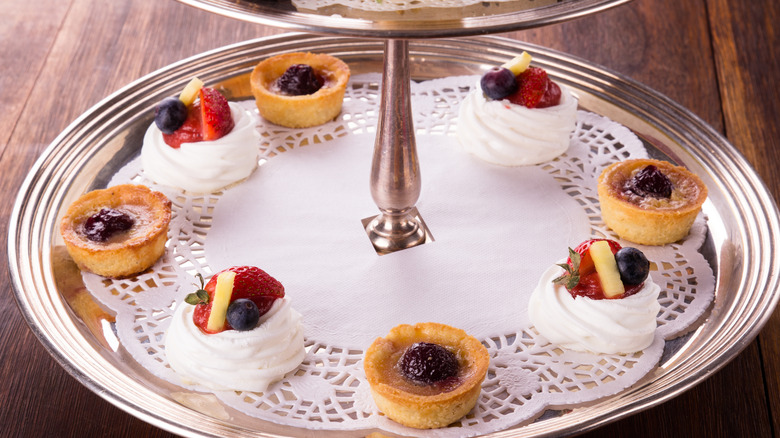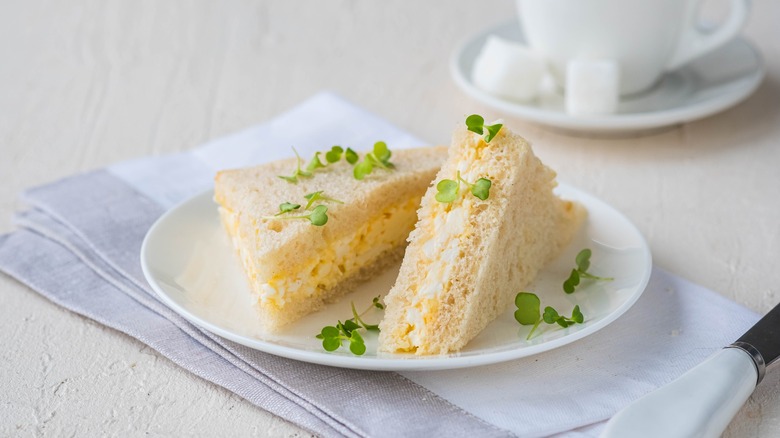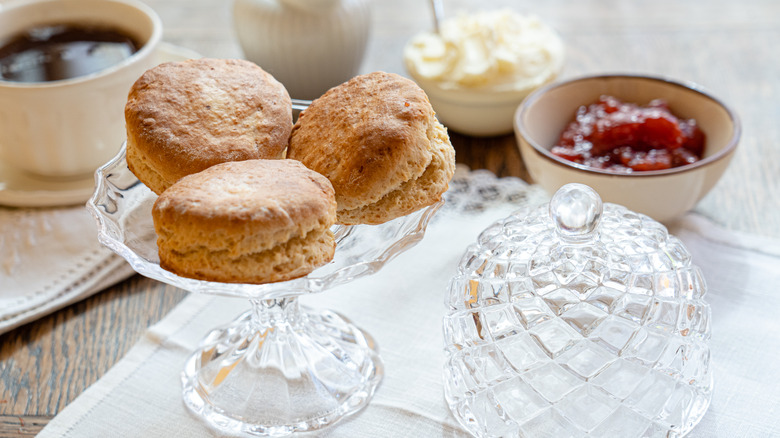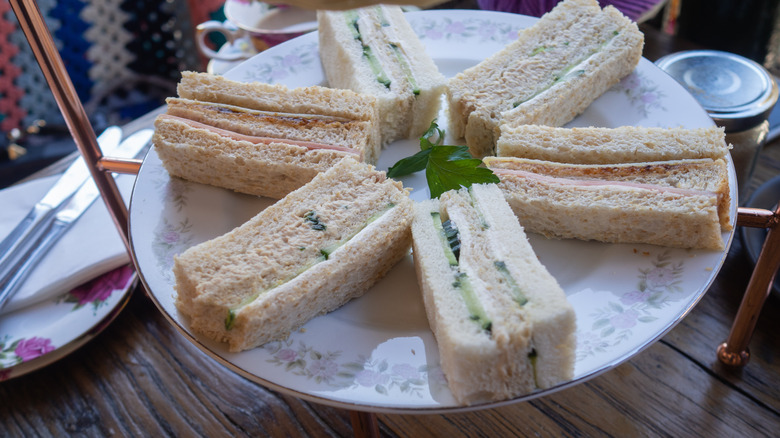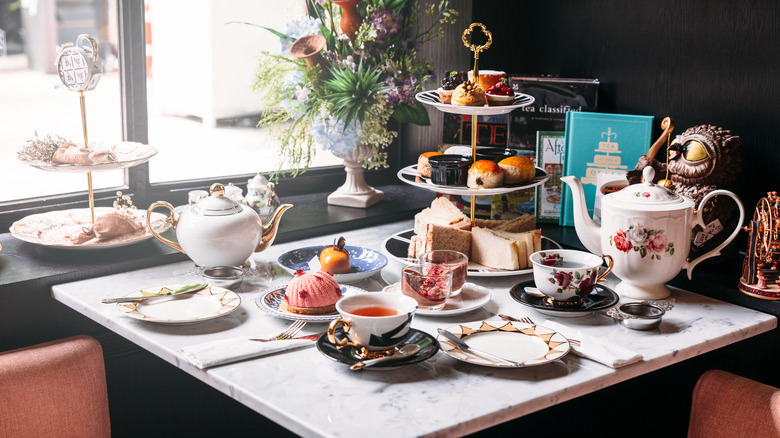15 Etiquette Rules For A Dreamy Afternoon Tea
We all sometimes crave a snack in the long hours between lunch and dinner. But it took a serious snacker to turn a penchant for midday refreshment into a revered national tradition. In 1840, Anna, the seventh Duchess of Bedford, regularly found herself hungry in the late afternoon, and discovered that tea, bread and butter, and cake were the perfect combination to tide her over until her usual 8 p.m. dinner. Her fondness for afternoon tea and cake became not only a personal habit, but a novel opportunity for socializing: She regularly invited friends over to join her for tea, and these friends — almost certainly upper-class women like herself — eagerly adopted the custom in their own homes.
And while today Britons of all social classes look forward to their afternoon tea and cake, the idea of a good pot of English tea and plate of scones still evokes a sense of high-class elegance. And this is not wrong. The noble roots of the tradition still persist in the traditional rules of etiquette for enjoying tea and its accompanying treats. The first of these? If you're enjoying a fancy mid-afternoon tea, don't call it high tea. This is in fact the term for the modest lower-class evening meal of tea, bread, and cheese — the term "high" refers to the height of the table at which the humble evening meal is served. True tea cognoscenti refer to the fancy tea of Anglophile dreams simply as afternoon tea.
Dress for the occasion
While there's no longer a need for you to wear your best gown, hat, and gloves to tea, as it was when the Duchess of Bedford invented the event,afternoon tea is still considered a special affair that's worth dressing up for. So if you wish to treat yourself to afternoon tea as a reward for finally clearing out the garage, go for it — but be sure to wash up and put on a clean, semi-dressy outfit first.
How dressy you need to be, however, will depend on where you plan to enjoy your tea. For most places, the expected dress code is country-club casual to business causal — so for women, nice slacks and a semi-dressy top will be fine. For men, a pressed, collared shirt with slacks will work. At outdoor garden teas, summery dresses and hats are always appropriate for women. A few high-end venues may expect more formal wear (jackets for men, for example) — but none will expect tiaras, so no need to go overboard. If you have any doubt about the expected dress code, go ahead and call the venue first — they'll appreciate your asking.
Hold your cup by the handle
When attending a real English tea for the first time, you may encounter an unexpected challenge: figuring out how to hold your teacup. English teacups tend to be smaller and more delicate than our familiar coffee mugs, so you'll likely find it impossible to slip your fingers through the tiny handle of your cup as you would with your mug at home. And while cradling the body of a teacup in your hands is a fully acceptable and expected practice in tea-loving Asian cultures (since traditional Asian teacups don't have handles), this is a definite faux pas at an English tea.
Instead, you'll need to grip the handle of your teacup firmly between your thumb (on the side of the handle facing you) and your middle and index fingers (on the side of the handle facing away from you). If needed, use your ring finger and pinkie to support the base of the cup. But whatever you do, keep your pinkie curled — sticking it out is considered bad form.
Keep your saucer still
The standard English tea set we know today — teacups with handles and matching saucers – first emerged in England the 1700s. The saucers helped make the cups easier to carry and also helped keep tables neat by catching any drips. Over time, some coffee and tea drinkers, especially in Scandinavia, discovered that pouring hot tea or coffee into their saucers was an efficient way to cool it down to a drinkable temperature. Thus, drinking directly from the saucer became a routine practice in some communities.
Even British aristocracy took up the practice, albeit for different reasons – porcelain was expensive and hard to come by, so drinking from saucers eliminated the need for cups. But the practice of drinking from saucers has long fallen out of fashion, and is definitely not something you should do at an afternoon tea today. Instead, you should leave your saucer on the table and avoid moving it around. If you're at a garden tea and carrying your cup and saucer, lift your cup to your mouth to drink, but don't lift the saucer with it. In short, it's best to handle your saucer as little as possible.
Don't stir in circles
One of the joys of afternoon tea is the possibility of indulging in higher-quality tea than you'd normally have at home, and enjoying it with the exact amounts of sugar and milk to suit your taste. This is your right, and it's expected — the sugar bowl and teaspoons are provided for a reason. But while discreetly perfecting your tea is fine, stirring it aggressively or loudly is not. Ultimately, the goal of enjoying a formal tea is to enjoy time intentionally set aside for calm and relaxation, and anything that distracts from this goal — such as violently sloshing one's tea around or repeatedly banging your spoon against your cup as you stir — is to be studiously avoided as a courtesy to other guests.
So if you want to add milk and sugar to your tea, go ahead, but do so gently and quietly. And for most of us, this means doing so mindfully — our everyday morning coffee habits may well be a faux pas in the context of a formal tea. For instance, the seemingly harmless habit of stirring in circles is frowned upon as potentially noisy and disruptive — and when you think about it, it's overkill for dissolving sugar in a tiny teacup. Instead, quietly glide your teaspoon through your cup from the 6 o'clock position to the 12 o'clock position two or three times.
By tradition, milk is added to teacups before the tea
Sometimes, longtime social customs emerge for reasons of logistics, rather than purely as a matter of etiquette. The old practice of drinking hot beverages from saucers rather than cups, for example, took hold in England because the scarcity of porcelain made it difficult to obtain cups along with saucers. And the old rule that milk must be added to one's teacup before the tea, once enshrined as a traditional rule of tea etiquette, also emerged for purely practical reasons.
This rule had nothing to do with the flavor or condition of the tea or milk or consideration for one's fellow diners. Instead, it had everything to do with the fragility of early porcelain teacups: The delicate cups tended to shatter upon contact with intensely hot liquids, an obviously unhelpful trait in a drinking vessel. But rather than switch to cups made from a more durable (and likely less-elegant) material, tea lovers engineered a work-around. Pouring the cold milk into the cup first helped the tea cool when it was added, reducing the risk of shocking the porcelain. Today's cups, no matter how dainty they may look, can safely endure contact with hot tea, and today the order in which you add your milk is purely up to you.
Adding cream to your tea is a no-no
If you're normally a coffee drinker, you're no doubt familiar with a huge range of options available for lightening your coffee — besides cream and whole, skim, or low-fat milk, you may also choose from plant-based options such as soy or almond milk. And if you're really in a pinch and can't tolerate black coffee, there's always one of those little containers of nondairy creamer around.
But if you find yourself at an afternoon tea, expect the options to be far more limited: You will only find milk on the table, and asking for cream for your tea is frowned upon. This is both due to tradition and because of the more delicate flavor profile of tea — while the richness of cream stands up well to strong coffee, it will overpower the flavor of tea. Even milk is meant to be used judiciously — by custom, it's only added to black tea, not more delicate herbal, green, or white teas. And if you're having tea in a venue that takes tea seriously, the milk on your table will be whole milk, which has just enough fat to mellow the bitterness of black tea. Lower-fat options, such as non-fat or low-fat milk, on the other hand, will just make your tea watery.
Stow your spoon properly after stirring your tea
Be honest: Do you remember what you did with the spoon or stirrer the last time you had coffee or tea? For most of us, dealing with the stirring implement after adding our cream or sugar is an afterthought at best. If we're out and preparing our drinks with disposable wooden or plastic stirrers, they'll likely end up in the trash. But if we're having hot drinks at home, our spoons will probably end up on the table or in the kitchen sink after being used.
When you're enjoying afternoon tea, however, putting a used, wet spoon on the table and potentially soiling the tablecloth simply will not do. Remember, everyone's there to enjoy a respite from the disorder of everyday life, so do your best to honor that and avoid making any sort of mess. To keep things neat — and to keep your spoon close at hand should you need it again – stow it on the saucer behind your teacup. When you do, be sure to position it far enough back that it does not hit against your cup and make any disruptive noises.
Here's who should pour the tea – and how
Afternoon tea didn't become a beloved tradition just because tea and scones are delicious together. The tradition is about much more than that — it's both a welcome break from the pressures of everyday life and a quiet time for conversation and friendship. For many, the choice of friends one shares tea with is just as critical to the success of the event as the choice of tea and sandwiches.
In short, teatime is a time for sharing. The fact that the food is served communally – the traditional three-tiered tea tray holds sandwiches, scones, and sweets for everyone – points to this, as does the longstanding custom that the host (never the waitstaff) takes responsibility for pouring tea for everyone present. Pouring tea and ensuring guests have enough tea is thus a gesture of goodwill and friendship, and a good host will do their best to ensure everyone has a good experience. A caring host, for instance, will proactively offer to pour and will know to fill teacups only 3/4 of the way to ensure there's adequate space for milk if desired.
If your tea is too hot, wait – don't blow
When your tea arrives at your table, there's a chance it may be too hot to drink right away. This is especially true for stronger, darker teas such as black and Pu'er teas, which taste best when steeped in fully boiling water — that's 212 degrees Fahrenheit in case you were wondering. Moreover, your tea may still need time to steep and develop its full flavors after it gets to your table, which is another reason to wait a few minutes before pouring — black tea needs between three to five minutes to steep, while herbal teas need as long as 10 minutes to taste their best.
By this time, there's a good chance your tea will have cooled a temperature that you can enjoy comfortably. If it's still too hot for your taste, however, don't try to speed things up by stirring or swirling it, or worse, by blowing on it – all of these things are considered rude. Instead, enjoy a sandwich and a few more minutes of conversation before trying to sip again.
Spoon clotted cream and jam onto your plate before dressing your scone
Scones (and their classic accompaniments, clotted cream and jam) are an absolute must-have at any proper tea, and for some, the very best part of the occasion. The tender, buttery pastry, along with the rich cream and fruity jam, are evocative of an exceptionally refined shortcake and are beyond satisfying when accompanied by good tea and conversation.
So of course, it's natural to want to just grab a scone, slather it with toppings, and go to town with it. But this is simply not done at a traditional tea experience. Scones are meant to be savored, not scarfed — and remember, afternoon tea is intended to be a snack to tide you over until dinner, not a full meal in itself. So when enjoying your scone, be intentional and take your time. By tradition, one is expected to spoon clotted cream and jam onto one's plate, rather than directly onto a scone. This step will not only remind you to take your time and eat in measured portions, but will keep crumbs out of the serving bowls of jam and cream.
Be sure foods on your tea stand are correctly arranged
So you and your friends have discovered the joys of afternoon tea and want to reproduce the experience at home. You've found the perfect vintage tea set and one of those cute three-tiered tea stands to break out for the occasion. You've got your favorite variety of loose-leaf tea ready to brew and an array of tasty traditional snacks. And everyone's even agreed to dress up for the occasion.
But when it comes to presenting your tea stand correctly, the devil's in the details. Tradition says there's a very specific — and intentional — way your treats must be organized. The bottom tier is reserved for sweets and desserts (such as petits fours and fancy cookies). Sandwiches — which are always small and sized for just a few bites — go on the middle tier. Finally, scones, which are always served warm, go on top. This is to keep the ambient heat from the scones from heating up the other treats, which are meant to be enjoyed cold or at room temperature.
When eating during tea, enjoy savories before sweets
To a casual observer, afternoon tea probably looks like a semi-dressy, yet mostly unstructured affair: You sit down, sip some tea, enjoy snacks and conversation, and repeat. And at some point, probably when the food runs out or dinnertime approaches, everyone savors a final sip of tea and says their goodbyes.
But no matter how enticing everything looks, avoid the temptation to grab a piece of everything and nibble randomly as the afternoon progresses. By tradition, an afternoon tea is more like a multi-course meal with each course meant to be enjoyed in a specific order. The only difference between tea and a three-course meal is no one changes plates or clears away leftover food between courses — guests enjoy all their treats off the same plate throughout the tea and are assumed to know and follow the proper order. By convention, sandwiches are to be eaten first, followed by scones, then finally sweets. If it helps, you can think of these courses as a main course, a bread course, and finally, dessert.
There's a right – and wrong – way to eat a scone
Legend states that sandwiches got their name from the fourth Earl of Sandwich, who was said to have been so preoccupied at the gambling table he couldn't tear himself away for a proper meal. Instead, he requested a piece of beef to be served between two pieces of toast. While certainly not the first person to combine bread with other foods, he made the preparation popular and highlighted the fact that sandwiches are not only filling, but an ideal meal when efficiency is a priority.
And while delicate finger sandwiches are a standard part of a full afternoon tea, a focus on efficiency is not — the goal is to enjoy your food (and tea and company), not rush through the event. And this means enjoying everything — including your scone — slowly. Even if you're an absolute beast when it comes to productivity in your weekday life, you must restrain yourself from splitting your scone, stuffing it with cream and jam, and wolfing it down. Your scone should never be a sandwich. Instead, break off small pieces and top each piece with cream and jam with a knife right before eating it.
Eating with your fingers is absolutely fine
Going to tea at a dressy venue can be intimidating if you're unfamiliar with the lay of the land. You want to look like you belong, or at the very least, not come across as an uneducated boor. So it's tempting to err toward the most formal behavior possible. You've put on a dressy outfit, are taking care not to spill or drip your tea, and you're speaking softly so as not to annoy those at adjoining tables. You might also be eyeing the cute little sandwiches and wondering what's the proper way to eat them.
Don't panic. The tiny treats served at tea are intended to be finger foods, and plucking up a sandwich or petit four and eating with your hands is completely acceptable. The only real requirement is that you take anything you touch (so please don't manually inspect each sandwich to identify a flavor you like) and avoid gulping down your treats. When eating scones, use a knife to apply your toppings, and eat your scone pieces with your hands.
But licking your fingers – or your spoon – is not
Afternoon tea foods are finger foods, so when eating your array of tasty tidbits, it's almost inevitable that some of it — perhaps a smear of jam, sandwich filling, or icing — will end up on your fingers. And because everything is so cute and tasty (and there's generally not a whole lot of it), it might be really, really tempting to quickly lick it off your fingers.
Don't do this. Think about it: You've just licked your fingers and now you're about to use those fingers to grab another treat off the communal tea stand? Not cool. Or classy. Sadly, that last delicious smear of chocolate ganache will have to be sacrificed on the altar of good manners. Just use your napkin to clean it off. And while we're on the subject, your teaspoon is meant to be used exclusively for stirring your tea, not for eating or drinking – so it's not be placed in your mouth, ever.

